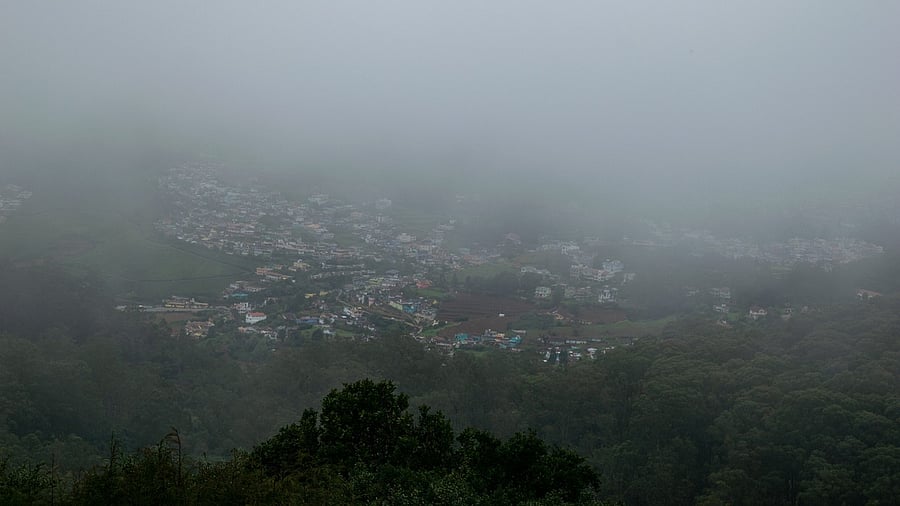
Rains in Ooty. Representative image.
Credit: iStock Photo
Chennai: As the Southwest Monsoon intensifies, all tourist attractions in the picturesque Nilgiris were closed on Monday due to a Red Alert issued for the district, even as Avalanche recorded an unprecedented rainfall of 35 cm in just 24 hours.
Several localities in the Nilgiris and Coimbatore districts recorded over 10 cm rainfall in 24 hours ending 8.30 am on Monday.
The MeT department issued a red alert (extremely heavy rainfall) to Nilgiris and ghat areas of Coimbatore districts, while issuing an orange alert (heavy to very heavy rains) to Theni, Tenkasi, ghat areas of Tirunelveli and Kanyakumari districts.
Avalanche and Upper Bhavani in Nilgiris district recorded 35 cm and 30 cm respectively in 24 hours ending 8.30 am on Monday, even as extremely heavy rains continue to lash the region. The Nilgiris district administration ordered closing down of all tourist destinations in Ooty, Coonoor, and Kothagiri on Monday, causing inconvenience to tourists who are camping in the district.
The administration also didn’t allow tourists to enter the district due to heavy rains. In its forecast, the MeT department said the rains could continue till May 28.
As many as 43 trees were uprooted and four houses damaged in the district since Sunday, even as landslips have been reported from many places in the interior areas.
“Strong Southwest Monsoon 2025 surge to continue over Peninsular India as widespread heavy to very heavy rains persist over the West Coast and the ghats. Few places in Nilgiris may see extremely heavy rains while plains may see fast-moving showers in a few places,” K Srikanth, an independent weather blogger, said.
Nilgiris has been experiencing extremely heavy rainfall and extreme temperatures in summer and winter for the past few years. The number of adverse weather events in the ecologically-sensitive district has also increased owing to the effects of climate change.